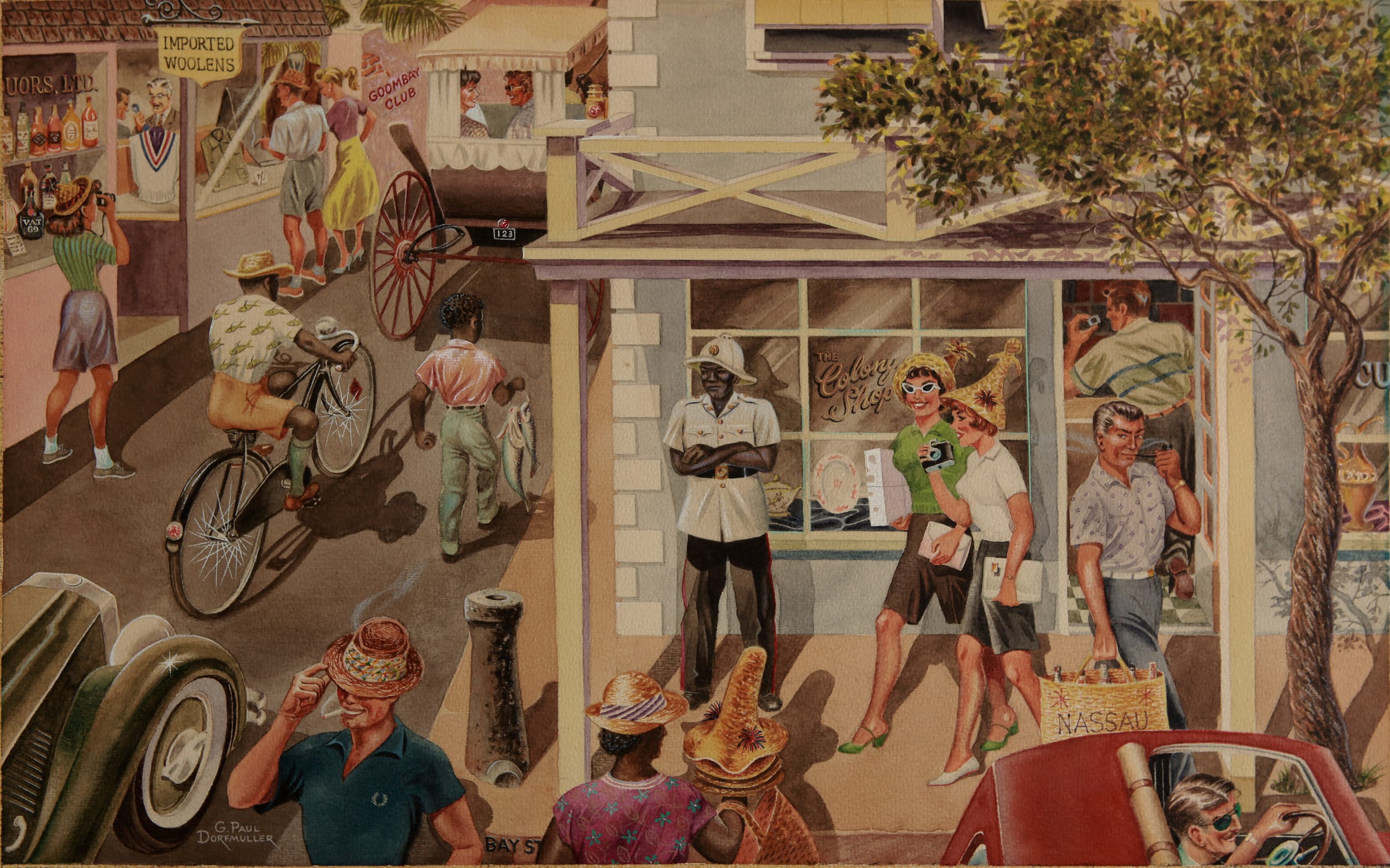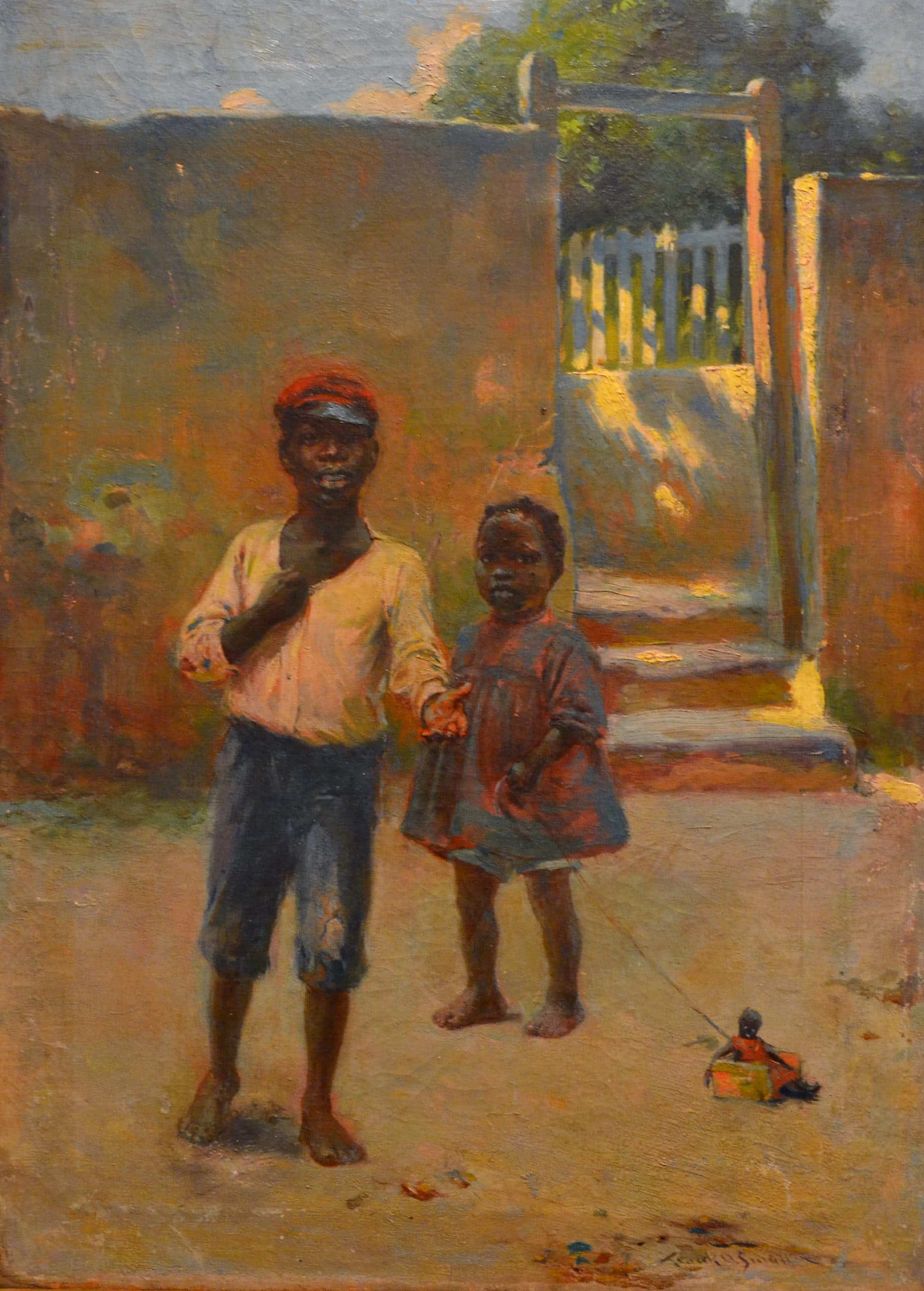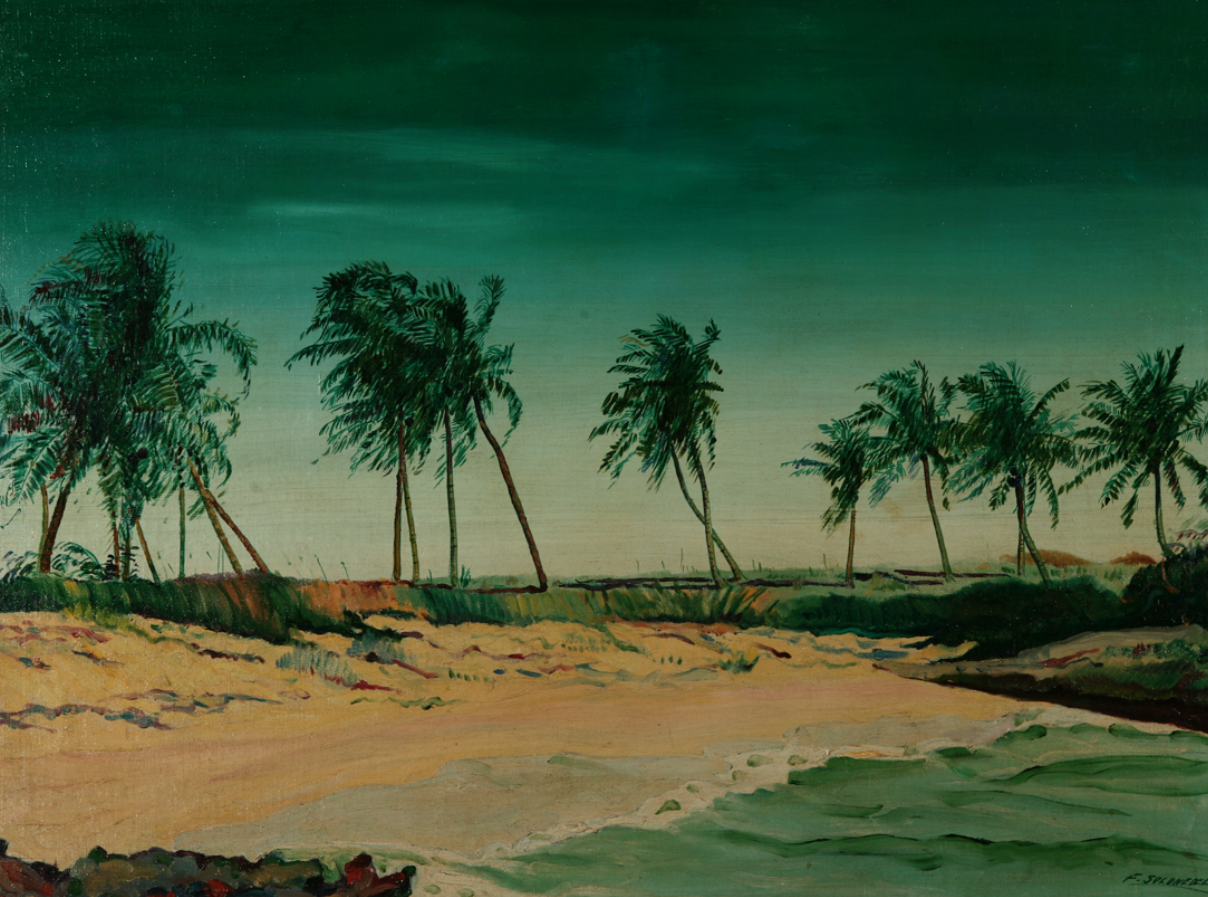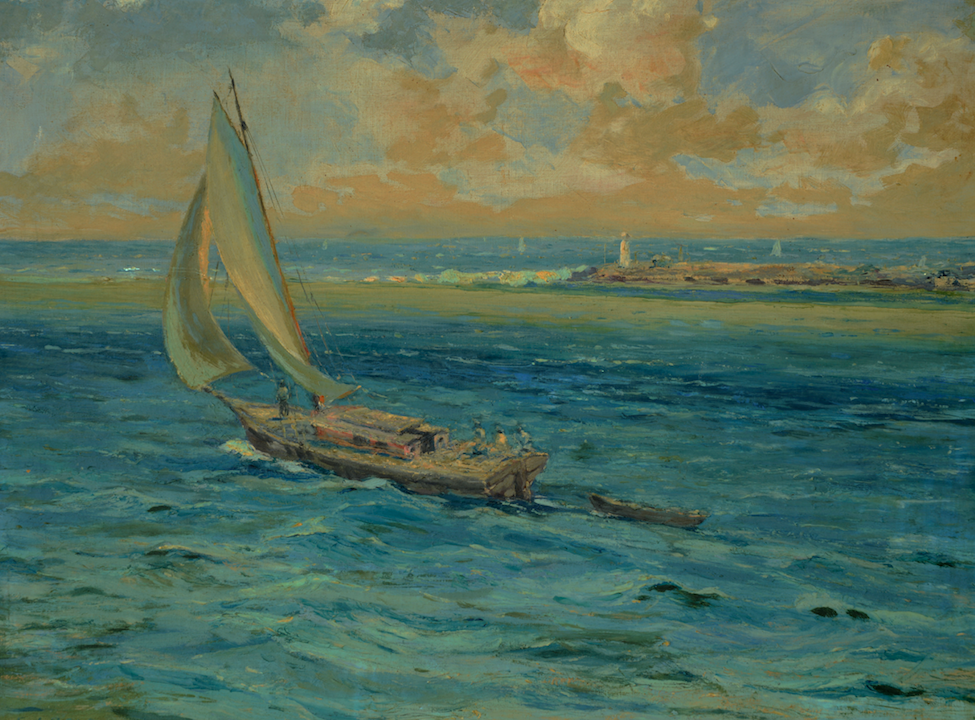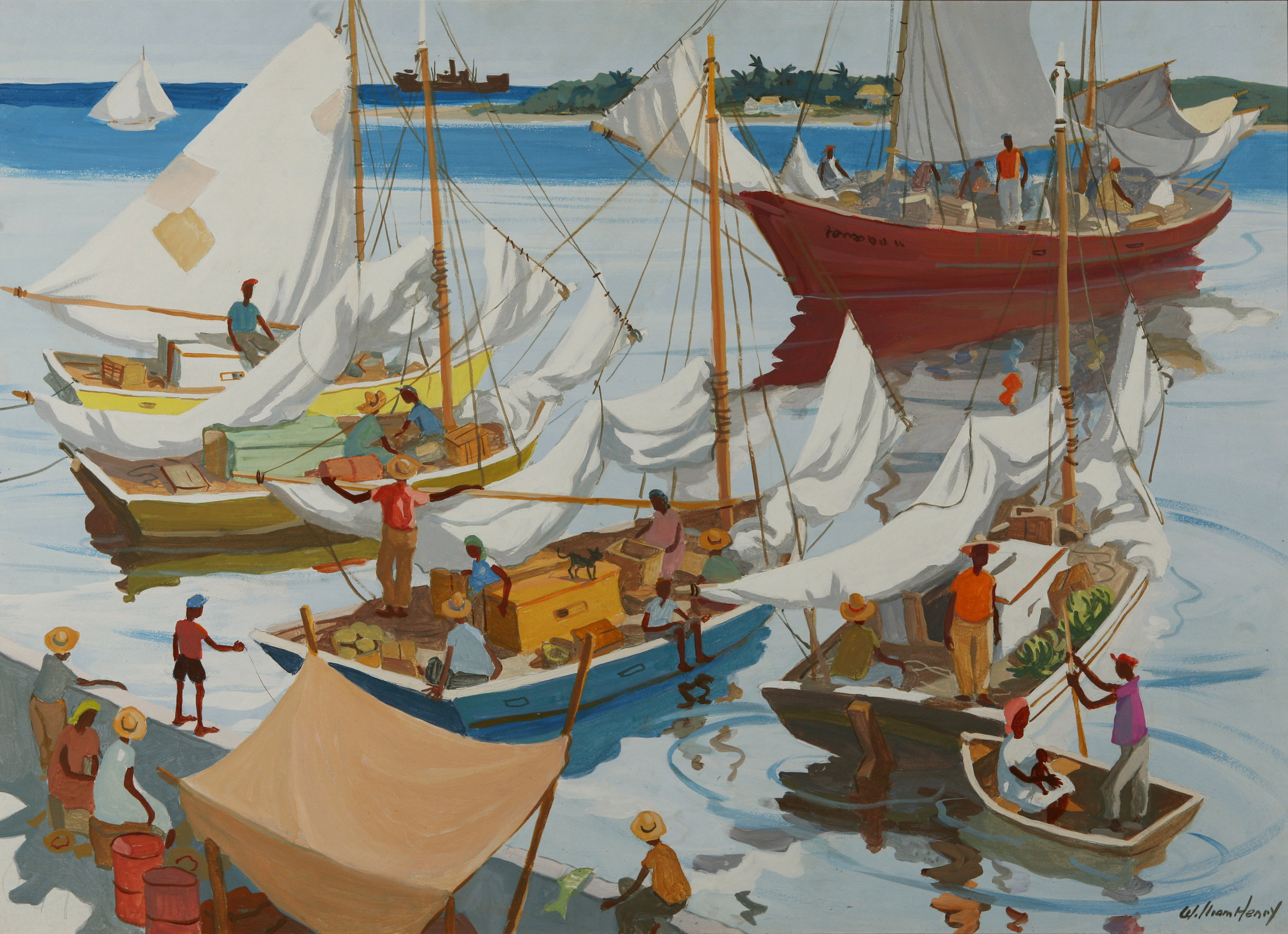All posts tagged: Traversing the Picturesque
Are We One With Nature? G. Paul Dorfmuller’s Nassau Corner
Care in the Craft: “Young Children” (nd) by Frank Otis Small
By Natalie Willis. We have a long history of looking in The Bahamas, in the idea of being seen. We were the chain of limestone that 40,000 Lucayans and Arawaks saw as home as they weaved their way north through the islands. We were Christopher Columbus’ misplaced Indies, setting his eyes on a lucky second-best that he claimed for Spain – thus beginning the “New World” and our written history. There were the hungry eyes set on plantation profit – and the hungry eyes of those forced to do that work. Then there were the thousands of eyes afterwards, in and out of the space in blinks and in boats that came to see just what “paradise” looked like. Those eyes were turned on us.
It’s not just black and white: It is also colour, light, shift, and feeling
By Dr Ian Bethell-Bennett. The University of The Bahamas. In “Traversing the Picturesque: For Sentimental Value” chief curator, Holly Bynoe brings together a rich tapestry of works from the nineteenth and early twentieth century Bahamas that shift our feelings. These works from diverse artists and styles reflect light and nature in different and nuanced ways. Many of these artists would ‘escape’ the harsh New England, Canadian, European winters, or be inspired by films such as “James Bond 007: Thunderball” to travel to and create with the light of the tropics which had and still has incredible sentimental value.
Traversing the Picturesque: A thought
By Dr Ian Bethell-Bennett. The 1920s through the 1960s were boom time for The Bahamas, especially for Nassau and other islands like Bimini, The Berry Islands and even Grand Bahama. Along with The Bahamas experience was the Cuba experience and the Haiti experience—the Caribbean was an exotic picturesque place to go to and explore. Tourism was new, it was exciting and it was important. The offering brought diverse populations into the various tropical spaces to see and live in this milieu.
Potter’s Cay: Markets and the Importance of Public Spaces
By Dr Ian Bethell-Bennett, The University of The Bahamas . “Traversing the Picturesque: For Sentimental Value” provides an invaluable view into the way the islands have been visioned for decades. It is a unique and important show that serves as a historical and current window into a perspective that adds value to our discussions and to how we see ourselves. Working in tandem with “We Suffer to Remain”, both shows provide an incredibly fruitful and open discussion for the cultural materialism and intermateriality cross-materiality that allows deeper and broader understanding of where we live and how we live here. The latter show deals with the loss of tangible and intangible cultural heritage of slavery through erasure. The periphery, the colony where the history physically took place has gutted its memory through a process of deletion and writing over.
“Traversing the Picturesque: For Sentimental Value” – The Colonial Gaze
By Holly Bynoe. On March 22nd through July 29th, The National Art Gallery of The Bahamas presents the first of two historical surveys exhibitions that include works produced from 1856-1960 by visiting artists and expatriates, who were inspired by the then-colony’s landscapes, people, luminescence, coastlines and seas and bustling lifestyles. Traversing the Picturesque: For Sentimental Value draws from several familiar and a few new collections to detail the breadth and scope of how The Bahamas has been framed within the popular global imagination and the impact of the colonial and outsider gaze on the development of a historical understanding of the nation.

